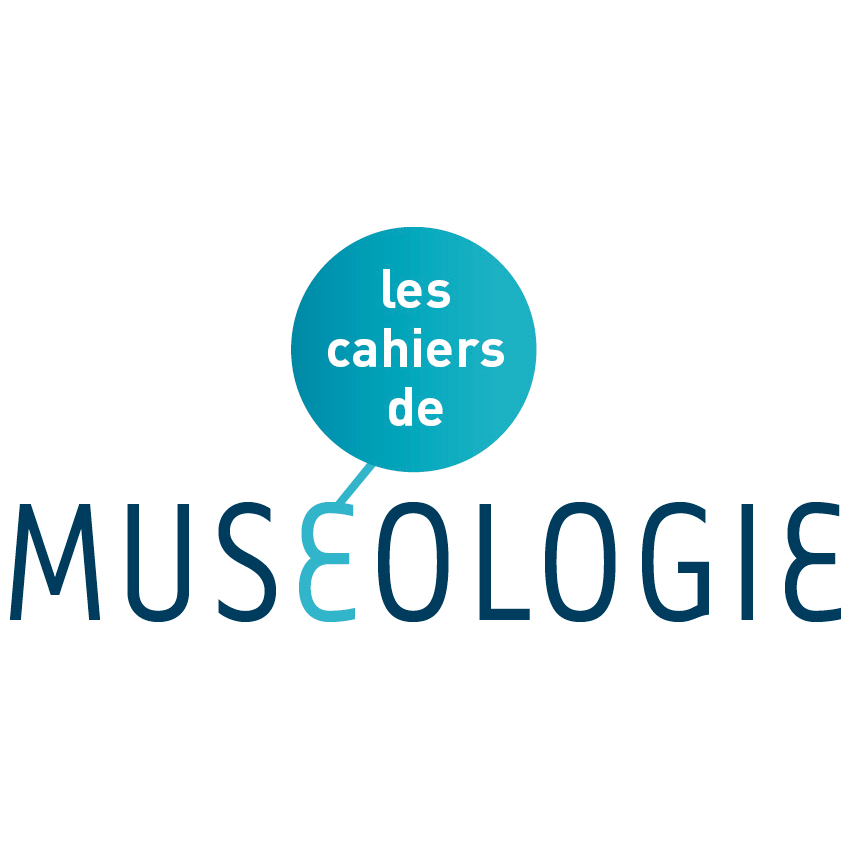- Accueil
- Numéro 1
- Carnets de visite
- Inter-American Dialogues at the Museum of Sacred Art of São Paulo (Brazil)
Visualisation(s): 1203 (1 ULiège)
Téléchargement(s): 41 (0 ULiège)
Inter-American Dialogues at the Museum of Sacred Art of São Paulo (Brazil)

Document(s) associé(s)
Version PDF originaleTable des matières
1According to the place and historical moment of its creation, the artistic production destined to religious cults, or Sacred Art, varies in techniques, functions, and aesthetics. Many of these decorative and devotional objects were intended for the liturgies of a notable patron of the Western world, the Catholic Church. They are presently located in museums worldwide, such as the Museum of Sacred Art of São Paulo (Museu de Arte Sacra de São Paulo) in Brazil.
2
A brief history
3The Museum of Sacred Art of São Paulo was born of an arrangement between São Paulo's Archdiocesan Curia – guardian of the first pieces of the collection assembled in the early 20th century – and the São Paulo State Government. Since 1970 the museum occupies part of the Monastery of Our Lady of the Immaculate Conception of Light, also known as the Luz Monastery (fig. 1), built in the 18th century (1774). Its architectural style is predominantly colonial Baroque, a recurring characteristic in Brazilian colonial cities.
4

Figure 1 – External view of the Luz Monastery where the museum is located, 2019. Photo: Otávio Balaguer.
5
6Baroque was the primary artistic and architectural expression in the country prior to its political emancipation. Its aesthetical exuberance was flourishing in towns which experienced a period of economic prosperity due to the mining of gold and precious stones during the colonial dominance, especially in the 18th century. Baroque architectural complexes are still found in many cities that were the subject of Portuguese colonization. These buildings are now recognized as Cultural Heritage by the Brazilian National Institute of Historic and Artistic Heritage (Instituto do Patrimônio Histórico e Artístico Nacional, IPHAN) and the UNESCO.
7
8The museum is responsible for a collection comprising architectural, artistic, archeologic, devotional, bibliographic, and archival items, recognized among the most important collections of Sacred Art in the country. It is noteworthy that the Luz Monastery is one of the few examples of the colonial Baroque style still preserved in the city of São Paulo, which had to face profound architectural transformations in its course to becoming the largest metropolis in South America. To this day, the monastery maintains its function as a residence for religious women, besides holding the sepulcher of Saint Anthony of St. Ann Galvão, founder of the hermitage and the only Brazilian to be canonized.
9
10Therefore, significant challenges are faced by such a cultural institution, located in a venue simultaneously valued as a historical building, a religious place, and a pilgrimage site. One of the roles taken up by the museum is to signal the separation between faith and art, between devotion and heritage education in a large metropolis.
11
12According to the institution, their terracotta pieces are the oldest examples of Brazilian art. These are considered evidence of the colonization of the territory that began at the Vila de São Vicente (Saint Vincent village) in the 16th century, on the coastal area of the present-day São Paulo region. The raw material employed in these pieces, clay, is presented as a keystone to the country's art and devotion.
13
14The Baroque heritage is perceived not only in the building complex but also in the statuary, paintings, and carvings. These form the most significant segment of the museum's collection. The elements are related to the Catholic Church, a powerful ally of the Portuguese metropole in territorial occupation and State government processes. The most striking stylistic characteristics are the wealth of details, the splendor, the drama, and the realism in the images wrought in precious materials.
15
The exhibition "Ibero-Andean painting – religious art in Hispanic America"
16The exhibition was open to the public from May 19 to July 28, 2019. Curated by the Brazilian museologist Beatriz Cruz, the exhibition presented the most recent acquisitions of the museum's collection: a selection of 10 pieces of Ibero-Andean art, donated by the collector Ladi Biezus.
17
18The visitor route began at the permanent exhibition, with the so-called "paulistinhas," named in reference to their production area. These are religious images typically made from clay in the state of São Paulo. Produced in the 18th and 19th centuries, they are remarkably simple and small (fig. 2). Albeit displaying some degree of Portuguese influence, these statues are deemed part of a properly Brazilian imagery tradition and hold a significant place in the regional cultural heritage.
19

Figure 2 – Master Saint Anne, “paulistinhas” from the 19th century. Photo: Otávio Balaguer, 2019.
20
21Continuing past the objects mentioned above, a visitor would reach the corridor where the temporary exhibition "Ibero-Andean painting" was displayed (fig. 3). The show intended to present a set of eight paintings from those recently donated to the museum by a private collector. Due to the characteristics of the artworks, these pieces have been classified as part of a series produced in the 17th and 18th centuries. It follows the standards of the Cuzco School, consolidated in the confluence of Spanish Baroque aesthetics and the techniques of indigenous craftspeople.
22

Figure 3 – View of the exhibition, 2019. Photo: Otávio Balaguer.
23
24The paintings were displayed in a long and spacious corridor, drawing attention to the lack of appropriate exhibition spaces in historic buildings. Nonetheless, the disposition of the artworks, sharing the room with Brazilian Baroque pieces, enabled the successful establishment of an Inter-American dialogue. The wood sculptures from Brazil were presented in contrast to the lustrous and large Iberic-Andean images.
25

Figure 4 – The wedding of Our Lady and Saint Joseph, unknown authorship, 17th-18th centuries, oil on canvas. Photo: Otávio Balaguer, 2019.
26
27Something striking about the paintings is the depiction of Catholic devotional episodes in a style typical of European conventions of the period, notwithstanding their production in America. Such is the case of the wedding of Mary and Joseph (fig. 4). The characters in the scene are dressed in a courtly manner, symbolically demonstrating the highest degree of prestige attributed to the Holy couple during that time. This symbolic attribution is reinforced in the painting by gilded details added to the garments.
28
29Further in the exhibition, a visitor would find the representation of Our Lady of Copacabana (fig. 5), with its richly adorned mantle, once again displaying the precious material so frequent in the Cuzco artworks. The golden tones are emphasized, shining in contrast to the dark colors of the background.
30

Figure 5 – Our lady of Copacabana, unknown authorship, 17th-18th centuries, oil on canvas. Photo: Otávio Balaguer, 2019.
31
32The curatorial choices, which were not explicitly stated, may promote the establishment of a unique dialogue between two instances of religious art from the Americas: the Iberic-Andean art, from the Viceroyalty of Peru, and the Brazilian art produced in the many Captaincies and States of Portuguese America. The similarities are especially astonishing since Brazilian history and relations were constructed early by opposition to Castilian culture. Thus, Brazilians seldom perceive themselves as Latinos and fail to strengthen cultural relations with other nations from South American.
33
34Regarding the sculptures displayed as part of the exhibition, it is worth mentioning the composition formed by an oratory, a crucifix, and two images of Our Lady of Sorrows and Saint John the Evangelist, all from the 18th century (fig. 6). The Christ figure in the crucifix shows a strong countenance, his incisive eyes gazing into the horizon. The blood droplets are still gleaming on his skin even after three hundred years (fig7).
35

Figure 6 – Oratory, unknown authorship, Brazil, 18th century. Photo: Otávio Balaguer, 2019.
36
37The exhibition challenged visitors to reflect on materiality and the set of principles that involve it, without touching the objects. As the visitors entered the exhibition area, they were greeted with signs forbidding them from doing so. This operation requires some support from professionals and implies conceiving history as a thread capable of conveying meaning to the museum experience.
38
39The introductory text of the Iberic-Andean show was wanting. Visitors unacquainted with the subject did not find further information besides the origin and stylistic school of the paintings. The institution's education department provides informative, high-quality guided tours, which were only available for groups and by appointment. Furthermore, the room was excessively illuminated to the point of rendering it difficult to appreciate the photography and gilded details properly.
40
41Nonetheless, with a trained eye, it was possible to enjoy the characteristics of the objects from two approaches. The materiality exhibited allows for the observation of intrinsic aspects of the pieces, such as their technique, execution, and state of conservation. On the other hand, an extrinsic facet reveals the relations of these artworks to imagery traditions, their functions, and circulation. Both dimensions provide insights for a comparative analysis of the objects, juxtaposing the oil paintings to the carved and polychrome wooden pieces to emphasize their distinct aesthetic features.
42

Figure 7 – Crucified Christ. Unknown authorship, 18th Century, Brazil. Photo: Otávio Balaguer, 2019.
43
44The furniture placed under the paintings contributed to the impression of a decorated room, contrasting with the perception visitors would have from the isolated paintings. The setting was charged with meaning. Interspaced with the artworks, liturgic objects displayed in niches disrupted the visual axis composed of wood, fabric, and pigments, with a striking metallic presence. The sheen of these materials lit the visitor's path and almost broke the monotony of the room.
45
46The neighborhood where the museum is located is remarkably inhabited by large groups of Spanish-speaking Latin-American immigrants, mainly from Bolivia, Paraguay, and Peru. Their presence is noticeable in the local commercial premises, restaurants, and factories. It is somewhat poetic that the collection of the Museum of Sacred Art of São Paulo now houses pieces of Andean art, possibly fostering a cross-cultural dialogue with these local inhabitants.
47
48To think of museums from the perspective of Social Museology is to understand them as part of a territory, guardians of Heritage elements, and members involved in a community. From this perspective, the exhibition held the potential to integrate audiences that belong to the neighboring communities. The practical realization of these latent abilities is not something that could be attested in a study visit. It requires further audience studies and communication analysis to be either confirmed or disproved.
49






